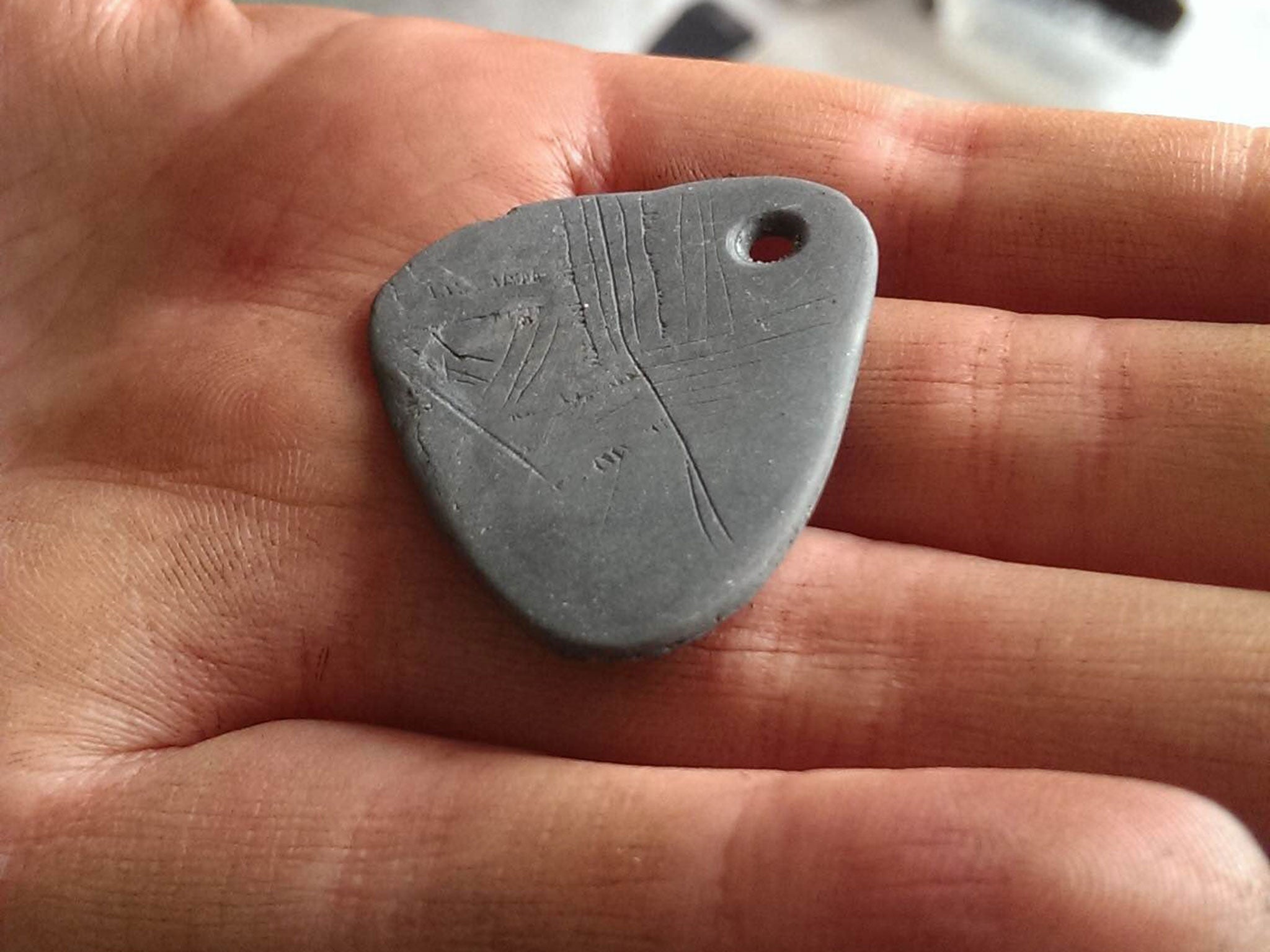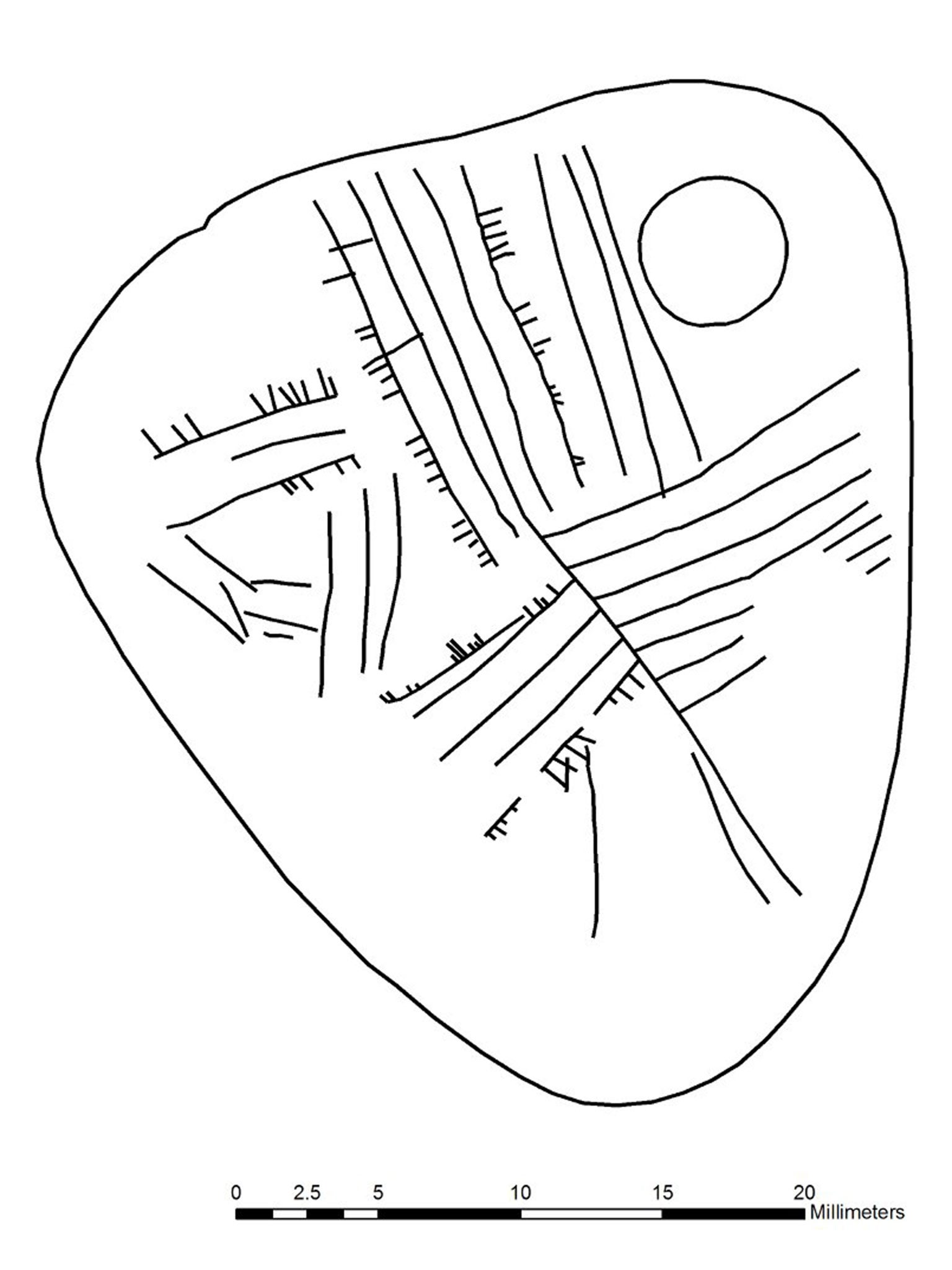Stone Age Britons may have had prehistoric secret code
Mysterious markings on 11,000-year-old pendant hint at a system of long and short lines to represent events or objects

Your support helps us to tell the story
From reproductive rights to climate change to Big Tech, The Independent is on the ground when the story is developing. Whether it's investigating the financials of Elon Musk's pro-Trump PAC or producing our latest documentary, 'The A Word', which shines a light on the American women fighting for reproductive rights, we know how important it is to parse out the facts from the messaging.
At such a critical moment in US history, we need reporters on the ground. Your donation allows us to keep sending journalists to speak to both sides of the story.
The Independent is trusted by Americans across the entire political spectrum. And unlike many other quality news outlets, we choose not to lock Americans out of our reporting and analysis with paywalls. We believe quality journalism should be available to everyone, paid for by those who can afford it.
Your support makes all the difference.Stone Age Britons may have developed a prehistoric secret code.
Mysterious markings engraved on an 11,000 year old pendant found in Yorkshire suggest that the area’s ancient Mesolithic inhabitants used a system of long and short lines to represent events or objects in numerical form.
The markings appear to have been inscribed on the pendant in a deliberately faint way – and archaeologists suspect that that may have been in order to render many of them almost invisible when not being examined closely.
The site they were discovered on – at Star Carr in the Vale of Pickering – was used for ritual activities – probably ceremonial dances performed by prehistoric shamans.
Other objects, found at the site in earlier excavations, include 21 ritual headdresses made from red deer skulls and antlers – and a further half dozen similar headdresses, unearthed there over the past three years.
Evidence from surviving traditional shamanic societies in northern Asia and elsewhere – where similar markings (often on wooden ceremonial batons) are still used – suggest that the lines on the recently discovered Mesolithic Yorkshire pendant probably represent the number of large animals (perhaps, in this case, red deer) killed on hunting expeditions. However, some of the lines could also represent the number of ritual songs and dances performed by the group when it returned with the dead deer to their camp.
“In shamanic and animist societies, hunting was a deeply spiritual activity,” says a leading authority on shamanism and animism, anthropologist Professor Peter Jordan of Groningen University’s Arctic Centre in the Netherlands.
Although, of course, the meat from slain animals was often crucial to human survival, shamanic hunting ‘theology’ normally saw the killing of an animal not as its death in the conventional sense of the word, but as the release of its soul.
The dances and other rituals performed when the dead animal was brought into the hunters’ camp were not just celebrations of hunting success, but also to welcome the creature (regarded as a ‘divine’ guest) into a human community which would have seen itself as having moral obligations to the animal and its powerful guardian spirit.
Modern ethnographic parallels suggest that the proper recording of kills and associated rituals would have been seen as essential to guaranteeing future hunting success.
The deliberate faintness of the engravings may have been in order to ensure that the information on the pendant remained, in effect, a secret record of kills and related rituals that was accessible only to particular individuals or groups.
The lines on the pendant were probably engraved over a period, certainly in at least two, and perhaps several, episodes – possibly representing numerous hunting expeditions.

It is the first time that such a pendant has been found in Britain – although some less sophisticated ritual ‘tally sticks’, made of bone have been found on even earlier sites in England, continental Europe and Africa.
The closest parallels to the Star Carr pendant have been unearthed in Denmark. There, a total of 70 similarly engraved pendants – all made of amber – have been found over past decades. Interestingly, part of an amber pendant, but without any engravings, has also been discovered at Star Carr.
The connection between the Yorkshire pendant and its similarly aged Danish parallels are very real – because, back in the Mesolithic period the North Sea area was still dry land and groups would have been able to easily move between the two areas.
University of York archaeologist, Professor Nicky Milner, who heads the team working at Star Carr, says that the pendant is “unlike anything we have previously found in Britain from this period”.
The current five year long archaeological investigation at the site, being carried out by researchers from the universities of York, Manchester and Chester, is being funded by the EU’s European Research Council, Historic England and the local Vale of Pickering Research Trust.
Duncan Wilson, chief executive of Historic England regards the pendant as a “sensational find”.
The object has lain buried in ancient mud on the edge of what was, in Mesolithic times, a huge lake. As from Saturday, it will go on public display at the Yorkshire Museum in York until 5 May.
Join our commenting forum
Join thought-provoking conversations, follow other Independent readers and see their replies
Comments